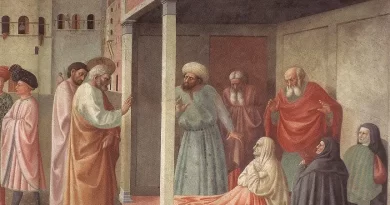The story of the numbering of the tribes – जनजातियों की गिनती की कहानी
The Numbering of the Tribes is an important event from the Old Testament in the Bible, specifically found in the Book of Numbers, which details the Israelites’ journey through the wilderness. The story begins with God’s command to Moses to take a census of the entire Israelite community.
After the Israelites were freed from slavery in Egypt, they wandered through the desert for 40 years before entering the Promised Land. During their time in the wilderness, God gave Moses several instructions to prepare the people for entering Canaan. One of these instructions was to count the people, particularly the men eligible for military service.
In Numbers 1, God instructs Moses and Aaron to count all the men of Israel who were 20 years old or older and able to serve in the army. The purpose of this census was to determine the military strength of Israel as they prepared to conquer the land God had promised to them. Each tribe was counted separately, and leaders from each tribe were appointed to assist in the census.
The tribes counted were the 12 sons of Jacob (Israel) and their descendants, but Joseph’s portion was split between his two sons, Ephraim and Manasseh, giving them a double inheritance.
The census excluded the tribe of Levi because the Levites were assigned to care for the Tabernacle (the sacred tent where God’s presence dwelled) and were responsible for its transport and duties related to worship. They were not to be counted among the fighting men.
The census results are detailed in Numbers 1:20-46. The total number of fighting men from all the tribes of Israel, except the Levites, was 603,550. Each tribe had its own number, with some tribes having larger populations than others.
The Levites were counted separately in Numbers 3, where it was established that their role was to serve in religious functions rather than military service. They were in charge of maintaining the Tabernacle, its furnishings, and the sacred objects used for worship.
The census helped Moses and Aaron organize the people into divisions for their march through the wilderness. It showed the military strength of the Israelites as they prepared to enter and conquer Canaan.
The census was also a way of showing that each person belonged to a specific tribe and was part of God’s covenant community. The exclusion of the Levites from the general census emphasized their unique, God-given role in serving the sacred spaces and the priests.
The Numbering of the Tribes in the Book of Numbers is a key moment in Israel’s wilderness journey. It reflects the need for both physical organization and spiritual readiness as the Israelites moved toward the Promised Land. The census also underscores God’s care for His people, showing that each individual was known and accounted for within the community.
The story of the numbering of the tribes – जनजातियों की गिनती की कहानी



